Revive Your PC's Unresponsive Front USB Ports
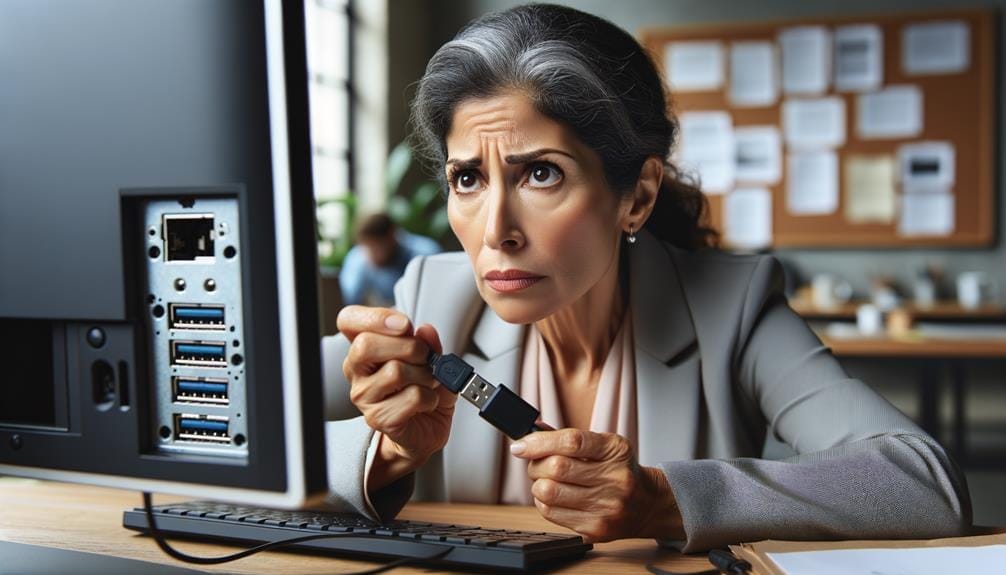
Placing USB ports on the front side of a desktop computer is crucial for easy connection to external peripherals. Nevertheless, if these ports become non-functional, it creates a considerable inconvenience for the users.
The unresponsive front USB ports could be symptomatic of various underlying issues, ranging from driver corruption to system settings. This necessitates a systematic approach to troubleshooting.
This article not only aims to identify the common causes behind front USB port problems but also provides comprehensive troubleshooting steps to address them. Additionally, it explores the potential need for professional repair or replacement.
By offering practical insights and actionable solutions, this article empowers users in resolving front USB port issues and optimizing their PC's connectivity capabilities.
Key Takeaways
- Restarting the PC can sometimes resolve front USB port issues.
- Troubleshoot the problem by checking for loose connections, swapping out USB cables, and testing the peripheral on another PC.
- Clear out debris and dust from the USB ports.
- Disable fast startup by unchecking the box for Turn on Fast Start-Up in the Power Options.
Common Causes of Front USB Port Issues
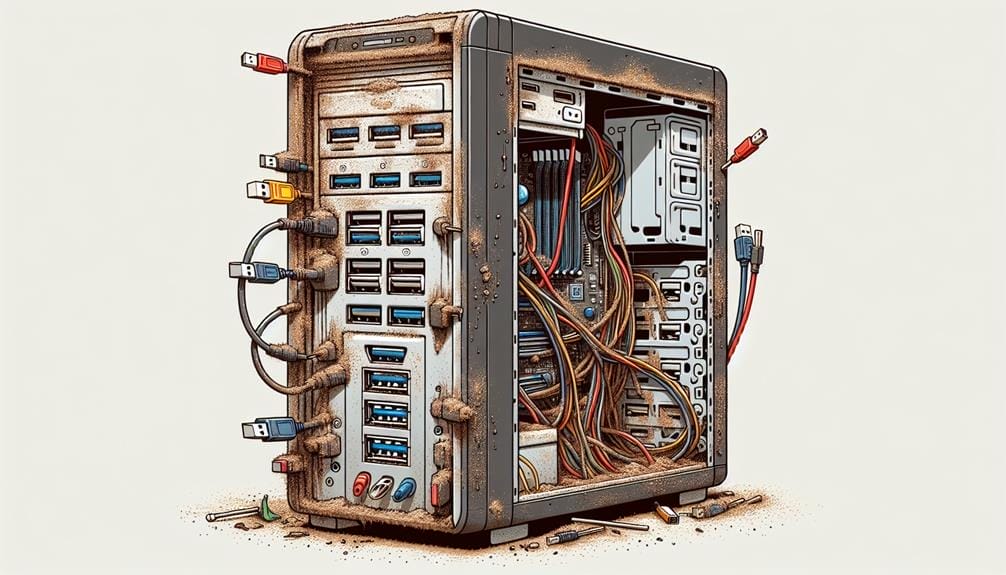
Front USB port issues can stem from a variety of factors, including corrupt drivers, system settings, and faulty connections. When troubleshooting USB port problems, it is essential to consider these causes.
Restarting the PC can sometimes resolve issues, but checking for loose connections, swapping out USB cables, and testing the peripheral on another PC can also help identify the root cause.
Additionally, clearing out debris and dust from the USB ports is a simple yet effective troubleshooting step. Scanning for hardware changes in Device Manager and uninstalling/reinstalling USB controllers if necessary can address driver-related issues.
Windows updates, disabling fast startup, and running troubleshooters are also vital troubleshooting measures. If these steps do not resolve the issue, using a USB hub to add more ports or considering professional repair may be necessary.
Troubleshooting Steps for Unresponsive USB Ports
When encountering unresponsive USB ports, troubleshooting steps should be taken to identify and address the underlying causes of the issue.
Start by checking for loose connections, swapping out USB cables, and testing the peripheral on another PC.
Clear out any debris from the USB ports and scan for hardware changes in Device Manager.
If necessary, uninstall and reinstall USB controllers.
Disabling fast startup in the Power Options settings may also resolve the issue.
Additionally, adding a USB hub can provide alternative ports for connecting devices.
If these steps do not resolve the problem, consider repairing or replacing the front USB port.
In the meantime, a USB hub can be used for temporary expansion of USB ports.
Disabling Fast Startup to Resolve USB Port Problems
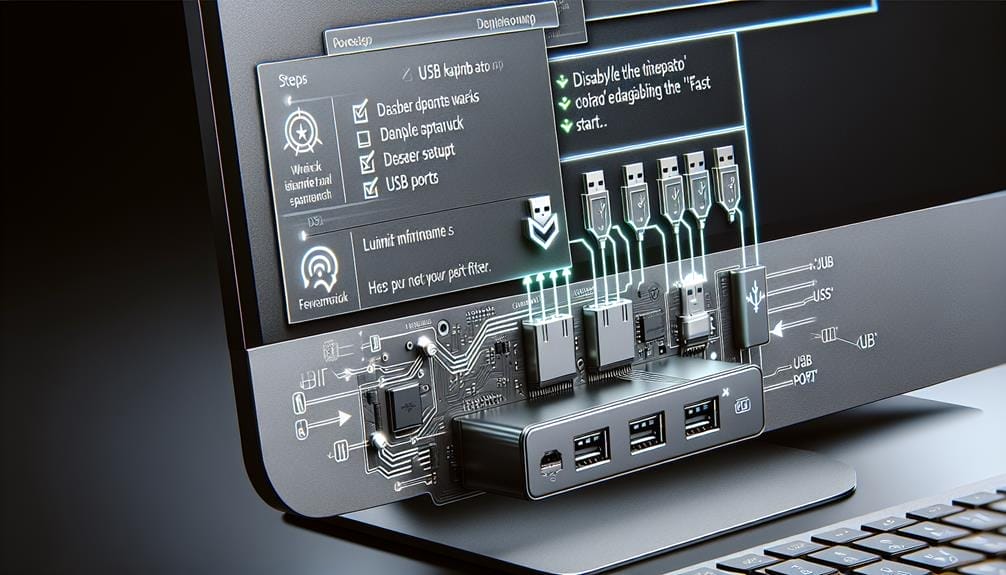
To effectively address unresponsive USB port issues, an important troubleshooting step involves disabling fast startup in the Power Options settings. Disabling fast startup benefits by ensuring a complete power cycle, which can help resolve USB port problems caused by system settings.
To disable fast startup, follow these steps:
- Open Control Panel and navigate to Power Options.
- Click on 'Choose What the Power Buttons Do.'
- Uncheck the box for Turn on Fast Start-Up.
- Restart the computer to apply the changes.
In addition, troubleshooting steps for faulty drivers should also be considered. This can include scanning for hardware changes in Device Manager and uninstalling/reinstalling USB controllers if necessary.
Adding More USB Ports to Your PC
Consider expanding your PC's connectivity by integrating additional USB ports using a USB hub. A USB hub provides the benefit of expanding USB connectivity, allowing you to connect more devices to your PC than the built-in ports would permit.
This is particularly useful for users who require multiple peripherals such as external hard drives, printers, and other USB-powered devices. By using a USB hub, you can conveniently manage various devices without the need to constantly plug and unplug them from the limited built-in ports.
Additionally, a USB hub can help keep your workspace organized and reduce cable clutter. When selecting a USB hub, ensure it supports the desired USB standard (e.g., USB 3.0) and provides sufficient power for the connected devices.
Limitations of Troubleshooting and Alternatives
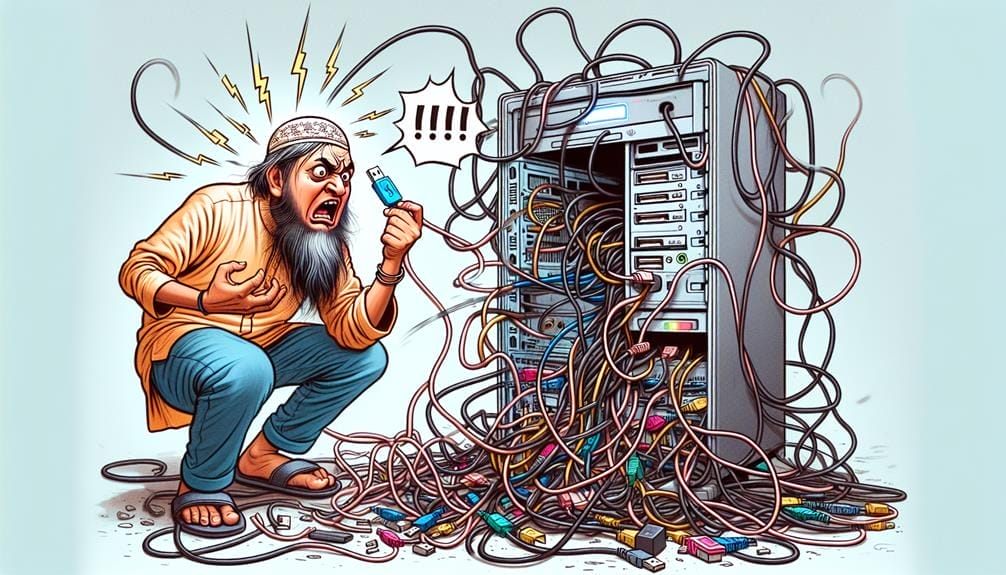
If the troubleshooting steps fail to resolve the front USB port issues, it may be necessary to evaluate the potential limitations and explore alternative solutions.
- Extent of Damage: Assess the extent of physical or internal damage to the USB ports and consider whether a DIY repair is feasible or if professional repair is necessary.
- User Experience: Evaluate the user's experience and expertise in DIY repairs to determine if attempting a repair is advisable.
- Professional Repair: Research and consider seeking professional repair services if the damage is extensive or if DIY repair is not viable.
- Community Engagement: Seek assistance and advice from relevant online communities or forums to explore alternative solutions and gather insights from others who may have faced similar issues.
In some cases, utilizing a USB hub can temporarily alleviate the issue while exploring repair options or seeking community engagement for further assistance.
DIY Repair Vs. Professional Repair for Front USB Ports
Upon encountering persistent front USB port issues despite troubleshooting, the evaluation of DIY repair versus professional repair becomes imperative, particularly in assessing the feasibility and potential risks involved in attempting a self-repair. Here is a comparison between DIY repair tips and seeking professional assistance:
| DIY Repair Tips | Seeking Professional Assistance |
|---|---|
| Check for loose connections and clean the ports from dust and debris | Evaluate the extent of damage and provide expert diagnosis |
| Reinstall USB drivers and troubleshoot system settings | Professional repair services can offer specialized equipment and technical expertise |
| Attempt minor repairs such as cable replacement or port re-soldering | Obtain warranty-covered repairs or replacements if applicable |
When considering DIY repair, it is essential to weigh the potential benefits of cost savings against the risks of causing further damage. Seeking professional assistance ensures a comprehensive assessment and appropriate resolution to front USB port issues.
Sporadic Front USB Port Issues and Selective Suspend Feature
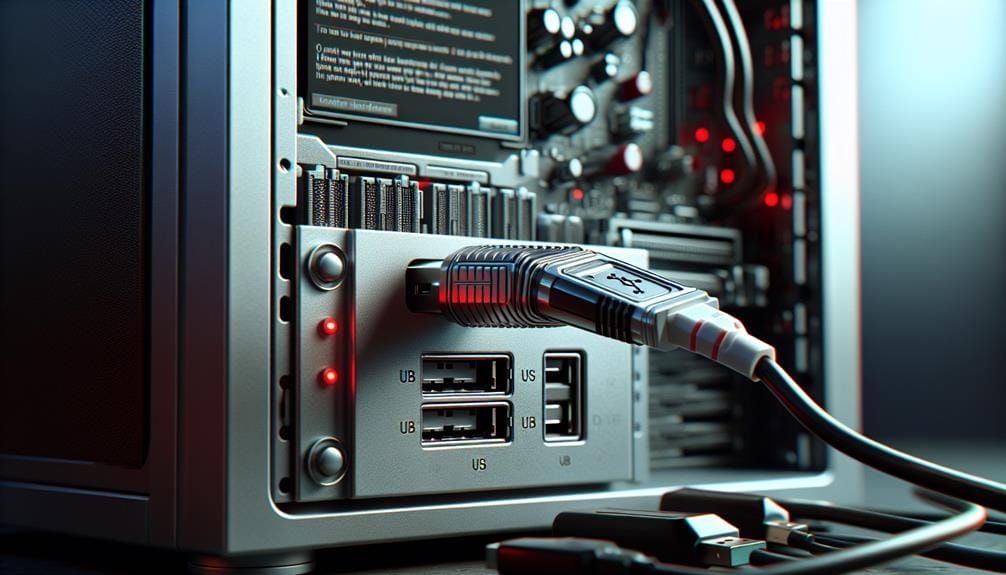
Intermittent malfunctions of front USB ports may be attributed to the selective suspend feature, a power-saving mechanism that intermittently disables these ports to conserve energy. When troubleshooting sporadic front USB port issues, consider the following:
- Disable Selective Suspend Feature:
- Navigate to Power Options in Control Panel.
- Select Change Plan Settings and then Change Advanced Power Settings.
- Expand USB Settings and USB Selective Suspend Setting, and set the option to Disabled.
- Update USB Drivers:
- Access Device Manager and locate the USB controllers.
- Right-click and select Update Driver.
- Check Power Management Settings:
- In Device Manager, access the properties of USB Root Hub.
- Uncheck the option 'Allow the computer to turn off this device to save power.'
- Test with Different Ports and Devices:
- Plug the USB device into different ports to identify if the issue is specific to certain ports or devices.
Community Engagement and Further Assistance
For additional support and guidance in resolving front USB port issues, consider engaging with the community and seeking further assistance.
Online forums and tech communities provide valuable platforms to share experiences and seek advice from individuals who have encountered similar problems. Engaging with the community allows for the exchange of troubleshooting methods, potential solutions, and innovative ideas to revive unresponsive front USB ports.
Additionally, seeking assistance from professional technicians or customer support services can offer tailored guidance and advanced troubleshooting techniques to address more complex issues.
Conclusion
In conclusion, front USB port issues can be frustrating, but with the right troubleshooting steps and understanding of potential causes, users can effectively revive their PC's unresponsive USB ports.
By addressing driver corruption, system settings, and physical connections, users can optimize their PC's connectivity capabilities.
Additionally, the option of adding more USB ports using a hub provides a viable alternative.
In cases where troubleshooting proves ineffective, professional repair or replacement may be necessary for a seamless user experience.

